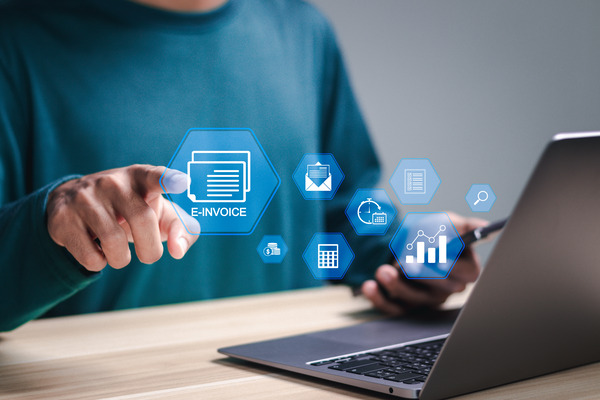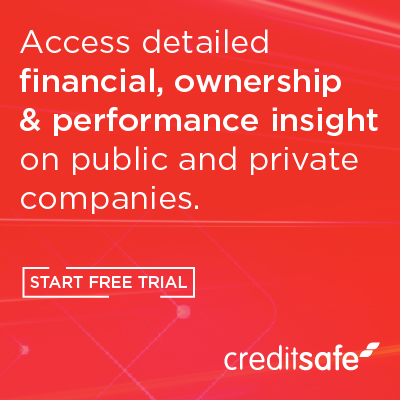Remember the old Bugs Bunny cartoons, when he’d try to patch a leak in the Hoover Dam with a little piece of tape? That’s what it can feel like trying to battle it out with invoice fraud attempts. Sure, you can fix problems as they come up, but when they keep coming up it gets overwhelming fast. Your best bet is to try and prevent invoice fraud as a long-term strategy. Putting some work into building up processes and an understanding throughout your team will help build a strong line of defense against invoice fraud.
With invoice fraud on the rise, knowing who you are dealing with is critical to making sure you get paid.
Even the smartest among us aren’t bulletproof. Sure, we’d all like to think we’re too smart to click on a link in a scam email or accidentally leak your personal information, but is that true? In reality, we’re all vulnerable to fraud attempts. When you think about something like invoice fraud, for example, you might think that you know all the signs. You know what invoice fraud is already and you know how to protect your company from it. But do you really? Invoice fraud, along with all other types of B2B fraud, is on the rise. Criminals are getting more and more advanced. Do you know all their tricks? Let’s find out.
Even long-term fraud schemes rely on one key moment: money leaving your business’ account and getting to a fraudster. Since money can change hands in the blink of an eye these days, that means your company can be scammed by invoice fraud just as quickly. That’s why the key to preventing invoice fraud is to know the signs to watch out for. Introducing anti-fraud processes into your regular workflow will help you catch it early, but what exactly should you be looking for?
Fraudsters rely on businesses not understanding what they’re doing, or being so busy that they don’t look closely enough to catch them. Every single time your business receives a new invoice, you need to rule out the risk of invoice fraud. The unfortunate reality is that if your business receives invoices, your business is also at risk of falling victim to invoice fraud.
So let’s make like the Boy Scouts and be prepared, right? Here are a few of the signs of invoice fraud you should be keeping an eye out for.
Stop invoice fraud before it can happen
Enter a company name to view a free businesss verification report.

Inconsistent invoices
Let’s say you’ve worked with a vendor for months or even years. You should have already received plenty of invoices from them. All of them worked out just fine, so it’s probably okay to pay the invoice without strict anti-fraud processes, right?
Come on, you know we’d never say that.
Having old invoices to reference is a huge asset to your business when it comes to fraud prevention. When a business sends you an invoice, you can check it against the previous ones. That way, if something’s different, you’ll be able to spot it right away. If a vendor’s invoice includes payment details, for example, you can confirm whether the banking information matches between invoices. If there are inconsistencies, you could be dealing with invoice fraud. When in doubt, contact the vendor directly (on the phone or in person, if possible) to confirm whether their bank details have changed.
Contract variations
Okay, so what happens if you’re working with a new vendor, or you don’t have that same big back catalogue of invoices to refer back to? That’s where the master contract comes in. This contract should clearly lay out every detail of your working relationship with the vendor. You should be able to read it and instantly know anything you need to know. For example, contact information, bank and financial details and the specifics of what you’re ordering from the vendor should all be there.
Even if you do have those previous invoices to look back on, don’t forget about the master contract. The banking information could be consistent between invoices, for example, but you should still regularly check those invoices against the master contract. Once a fraudster finds an in, they’ll probably stick around until they get caught. If they were able to intercept a previous invoice and change the banking information once, they can do it again. Checking the banking information against the master contract is a way to know for sure whether an invoice is legit.
Incorrect purchase information
Look at more than just the banking information when you’re sent an invoice. To get the full picture – and the full protection from invoice fraud – you need to review the invoice as a whole. What does the invoice actually say you’ve purchased? Look back at that master contract again and make sure the numbers line up exactly. Even if you’ve ordered 100 units and they’ve shipped 99, that kind of revenue leakage can add up quickly.
You should always confirm the purchases on the invoices with the teams responsible for the account. They should know what you’ve ordered and how much it should cost. Essentially, you need to make sure that you’ve actually ordered what this invoice is asking you to pay for.
Inaccurate costs
Picture this: your team signs a deal with a new supplier. Everyone’s happy – they make exactly what you need and the price was right. But when the invoice arrives, it’s more than what you originally agreed to pay for. Much more, actually.
Overbilling is an extremely common type of fraud. It’s when a fraudulent business adds extra, hidden fees into their invoices and hope that companies pay up. Often, companies are worried about paying invoices on time or threatened with legal action for not paying what they “owe,” so they pay without thinking. But that could be a big mistake. Make sure that you’re only paying for the goods or services you ordered. Sure, it’s not so unheard of for the end total on the invoice to be a bit more than what you agreed initially. With international suppliers, especially, things like shipping fees or currency conversions can sometimes change that final number. But you need to make sure that those additional fees make sense before you pay. If they don’t, the business that sent you the invoice should be able to talk you through each line on that invoice.
Unusual requests
There are so many benefits that come with working with the same suppliers for longer periods of time. Having good business relationships is critical when you work with suppliers – after all, their goods or services help keep your business running smoothly.
One of the biggest benefits of a long-term business relationship is that you get to know your suppliers and their teams. That includes getting a sense for things like how they speak and act. You learn their mannerisms. And you should also have a set procedure in place for how their invoicing process works. If a supplier sends you an email with a sudden change in their process, or an unusual request (like paying the invoice in a different currency, or sending it to a middleman), that’s a major invoice fraud red flag.
Suspicious links
Time for a bit of internet safety 101. Sure, you know to not click on suspicious links on your personal account – you get that you haven’t really won the lottery or need to send money to a billionaire. But believe it or not, not everyone’s gotten the memo about suspicious links in business emails.
So what gives? Is everyone really falling for obvious scams?
Well, no. Instead, fraudsters hide the links in realistic invoices. But like we just said, you get used to the way a supplier operates after a while. If they send you an invoice but tell you to click a link in the email to pay for it, for example, it should set off alarm bells. You could be falling right into a phishing scam – and things tend to only get worse from there.
New senders
People move on from jobs every day. Part of building those valuable long-term supplier relationships is getting to know multiple people. In relationships like that, it’s practically a sure thing that you’ll interact with multiple people doing the same job. I’m not saying that you should ignore an invoice if someone different to your usual contact sends it, but I am saying to be slightly wary.
Think about the conversations you’ve had with previous contacts: did they mention anything about leaving their job, or a new person joining their team? If the answer is no and you receive an invoice out of the blue, tread carefully. It’s a good idea to make extra sure that that person is on the up and up. It could be that a new person joined your suppliers’ team, but it could just as easily be an impersonation scam.
Run a business credit report
You could be forgiven for thinking a business credit report is simply for checking credit. But the information contained within a report gives you much deeper insights into a company's financial health and payment behaviors, which could be vital when trying to spot potentially fraudulent invoices.
Verify the company details
A full credit report will contain a lot of information you can check invoices against for fraud. For example, you could review the website domain listed on the report and check this against the email address that sent the invoice. A business credit report will also contain the full registered company name, any other legal names and branch locations so you can match up all the details and look for any inconsistencies.
Officer details
If you've been working with a smaller customer or potentially a large contract, you may have had some dealings with the officers of the business. Fraudsters may potentially try and claim to be new officers of a company and send invoices. So, double checking the officer details in a credit report could unearth any potential problems.
Payment behavior
Reviewing the payment behaviors within a business credit report could also provide some insight into potential fraudulent activity. As I said earlier, if there are irregularities in the amounts on the invoices, you could check the size of invoices they pay to other businesses and see if there's a pattern and whether the sum being requested fits that pattern. It may well be legitimate. But as with all of the steps mentioned here, it only takes one slip up to allow fraudsters into your business who could take your well-earned money.
The moral of the story here is if something doesn’t feel right when you receive an invoice, carry out your due diligence and use all the tools you have to make sure that the invoices are legitimate. Vendor fraud and invoice fraud, in particular, are on the rise so staying vigilant at all times is the only way to make sure your business is protected.

About the Author
Steve Carpenter, Country Director, North America, Creditsafe
Steve Carpenter oversees business operations, sales, P&L, product and data. With an impressive 16-year tenure at Creditsafe, Steve has played an integral role in the company's international expansion efforts, spearheading global data acquisition and fostering global partnerships.
